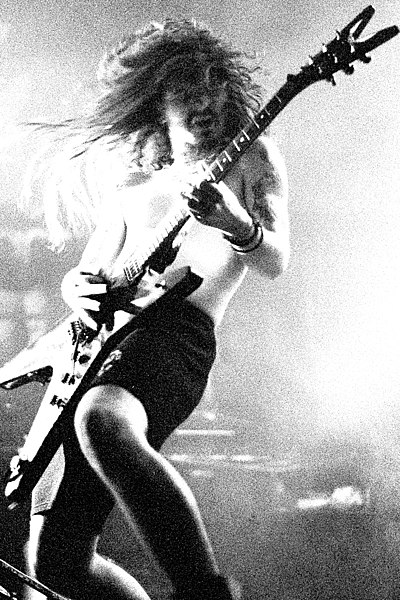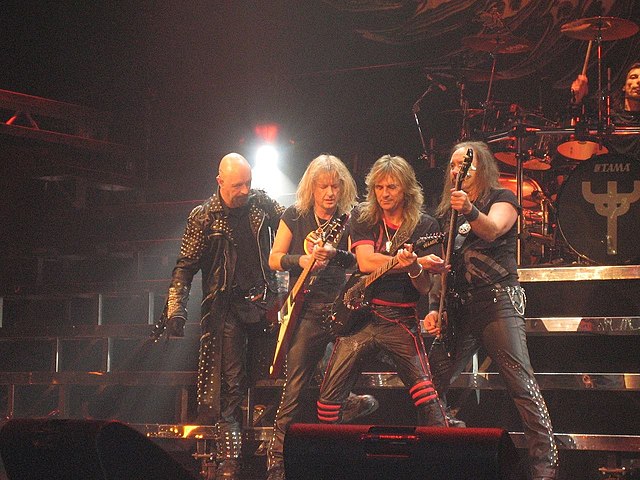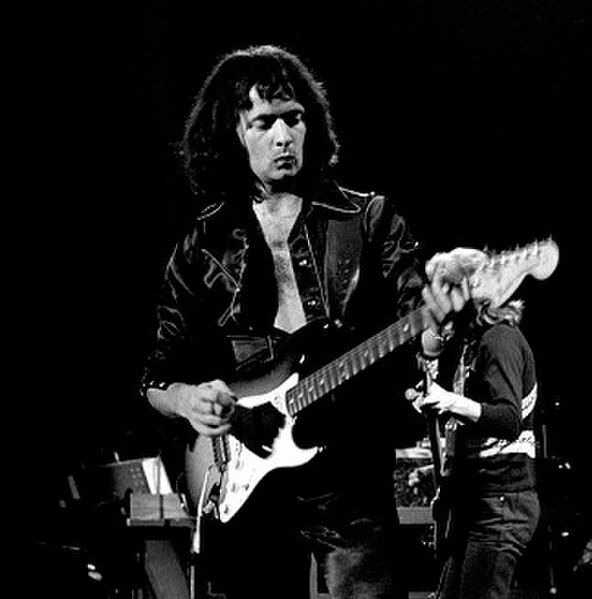Groove metal, sometimes also called neo-thrash or post-thrash, is a subgenre of heavy metal music that began in the early 1990s. Heavily influenced by thrash metal, groove metal features raspy singing and screaming, down-tuned guitars, heavy guitar riffs, and syncopated rhythms. Groove metal is usually slower than thrash. Pantera are often considered the pioneers of groove metal, and the genre expanded in the 1990s with bands including White Zombie, Machine Head, and Sepultura. Successful groove metal acts of the 2000s include Lamb of God, DevilDriver, and Five Finger Death Punch.
Pantera guitarist Dimebag Darrell, 1991. Pantera is credited with popularizing the groove metal genre.
Machine Head performing in 2007
Heavy metal is a genre of rock music that developed in the late 1960s and early 1970s, largely in the United Kingdom and United States. With roots in blues rock, psychedelic rock and acid rock, heavy metal bands developed a thick, monumental sound characterized by distorted guitars, extended guitar solos, emphatic beats and loudness.
Judas Priest performing in 2005
Enid Williams from Girlschool and Lemmy from Motörhead live in 2009. The ties that bind the two bands started in the 1980s and were still strong in the 2010s.
Ritchie Blackmore, founder of Deep Purple and Rainbow, known for the neoclassical approach in his guitar performances.
King Diamond, known for writing conceptual lyrics about horror stories






